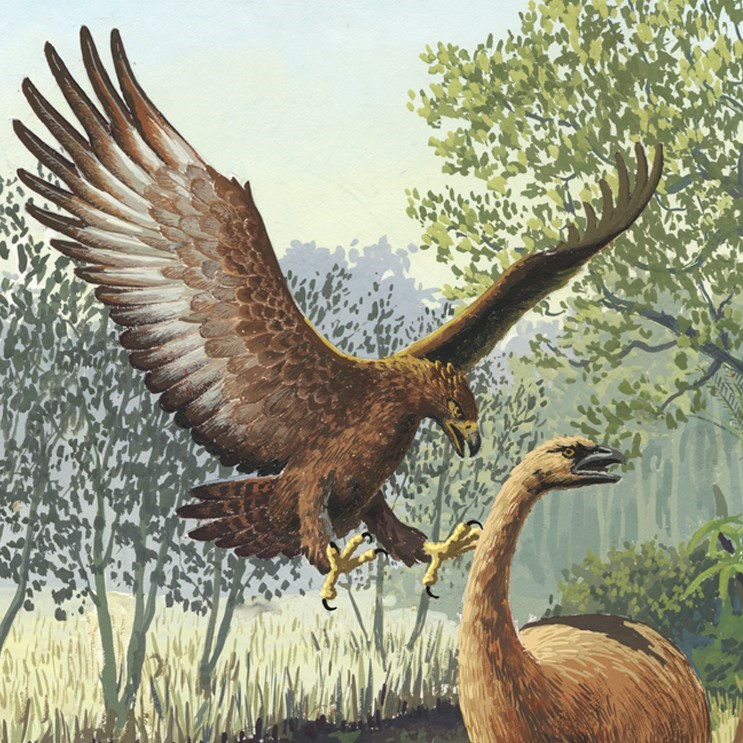A new study has shown that humans have driven twice as many bird species to extinction as previously thought, amounting to some 12%.
The research, published in Nature Communications, says that approximately 1,430 bird species have become extinct in the last 120,000 years, when the Late Pleistoscene period began.
Scientists set out to calculate how many 'dark extinctions' – species dying out without being recorded – have occurred in addition to the roughly 640 species known to have been driven out of existence.

New Zealand, once home to giants such as Haast's Eagle and moas, was used as a baseline for the statistical models used in the research (Wikimedia Commons).
Dr Rob Cooke, lead author of the paper and ecological modeller at the UK Centre for Ecology and Hydrology, said: "We know we have lost iconic birds like the Dodo, but we wanted to get a better estimate of the bird extinctions we didn’t know about."
Due to its extensive fossil record and observational data, New Zealand was used as a baseline for a statistical model to come up with the answer.
Cooke said: "New Zealand was the benchmark; it has the most complete bird record based on found fossils and bird observations, so that is the zero point – there is nothing unobserved in New Zealand."
Based on the New Zealand data, the researchers estimated how many species may have lived on an island, before subtracting the number of known extinctions and remaining living birds.
Cooke explained: "Islands are the best place to study extinctions: 90% of extinctions are on islands, because island birds have nowhere else to go."
According to the researchers, the estimate of 1,430 bird extinctions may be an underestimate. They chose to remain conservative but say that the true loss could even be up to 2,000 species.
Habitat loss, hunting and invasive species are among the biggest human-associated causes of bird extinction worldwide. The research sheds light on "the largest human-driven vertebrate extinction wave" on records, when species were lost at nearly 100 times the natural rate when newly arrived humans settled in the eastern Pacific.
Cooke said: "The world is emptier than we realise and these missing birds are a loss to our imagination."
The team also pointed out the ecological gaps left behind by species that would haved played a vital role in their ecosystem, such as pollination and seed-spreading.
Known extinct bird species include large herbivores like the three species of elephant bird in Madagascar, and impressive predators such as Haast's Eagle, which once soared over New Zealand.
Dr Alexander Lees, from Manchester Metropolitian University, who wasn't involved in the research, said: "That the study convincingly shows we have mismeasured the avian extinction crisis does not surprise me at all. Most birds have very small bones and don’t fossilise easily; many islands are not conducive to fossil formation; and in many places no one has looked for fossils at all."
Cooke warned that more human-driven extinctions will come if significant changes aren't made in the world. The same researchers previously calculated that up to 738 bird species could be lost in the next few hundred years.
Reference
Cooke, R, Sayol, F, Andermann, T, Blackburn, T M, Steinbauer, M J, Antonelli, A, and Faurby, S, 2023. Undiscovered bird extinctions obscure the true magnitude of human-driven extinction waves. Nature Communications. DOI: https://doi.org/10.1038/s41467-023-43445-2

